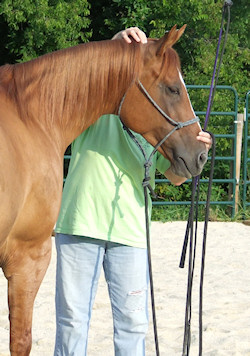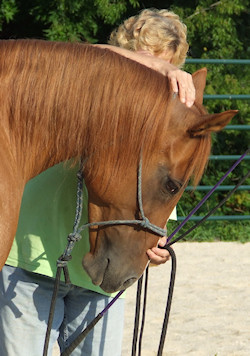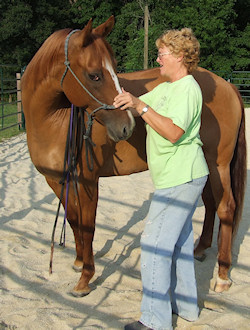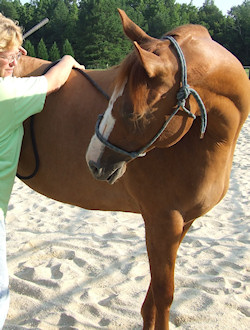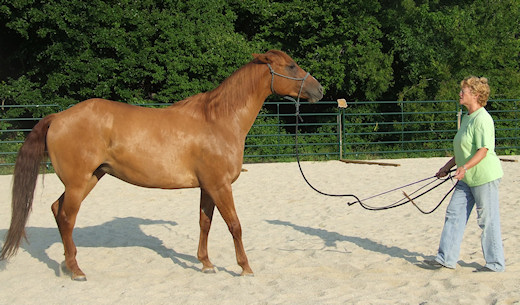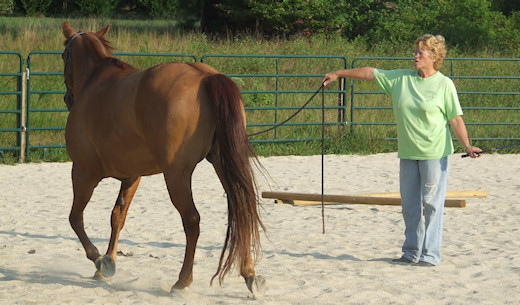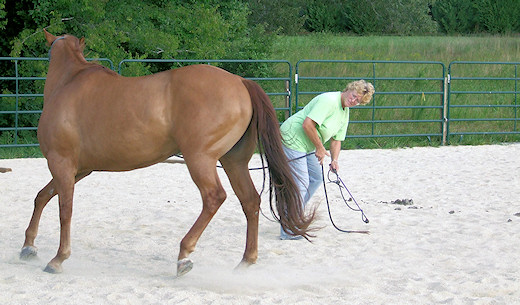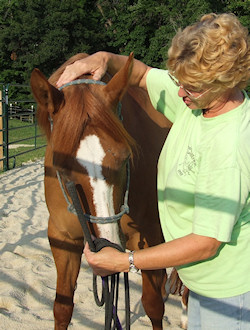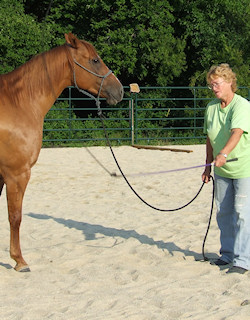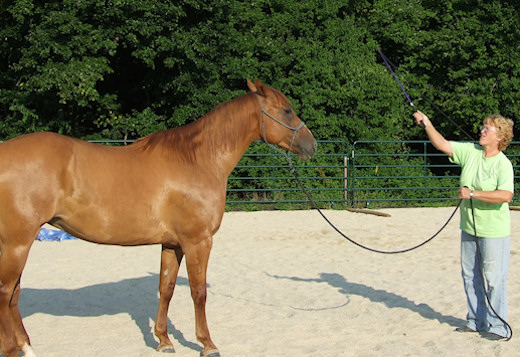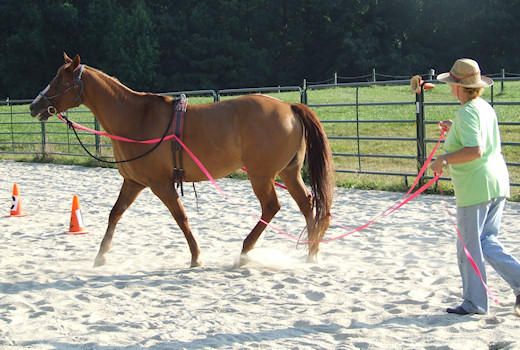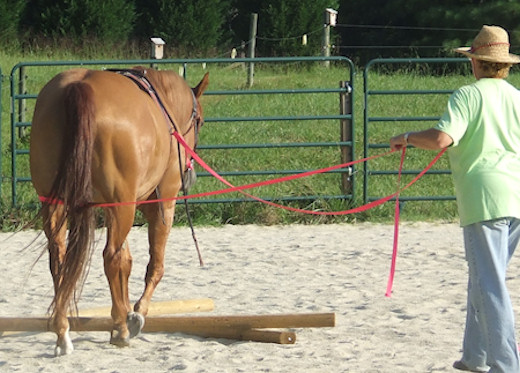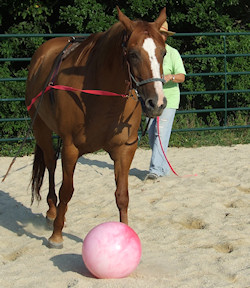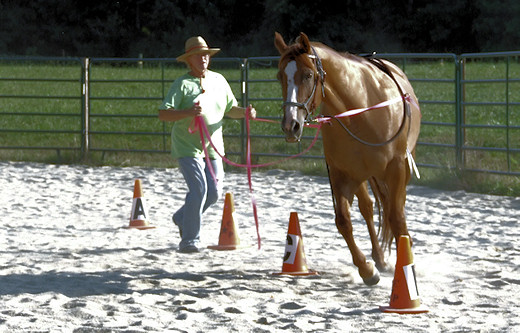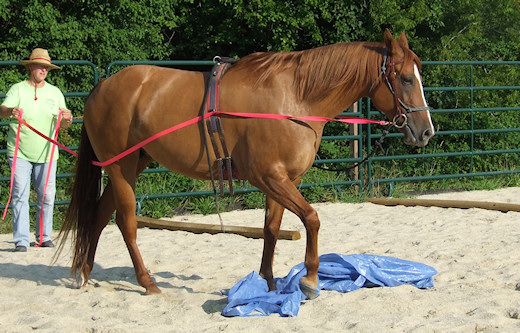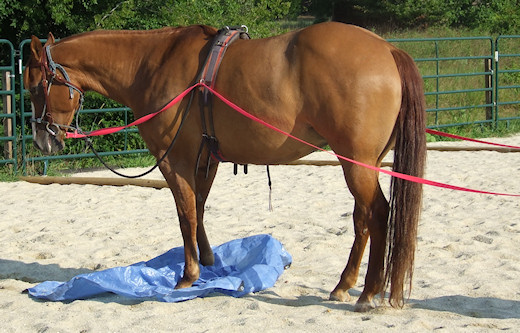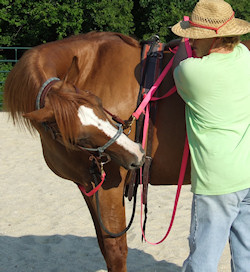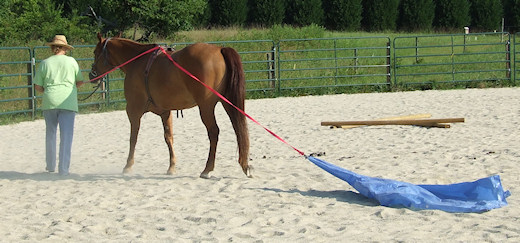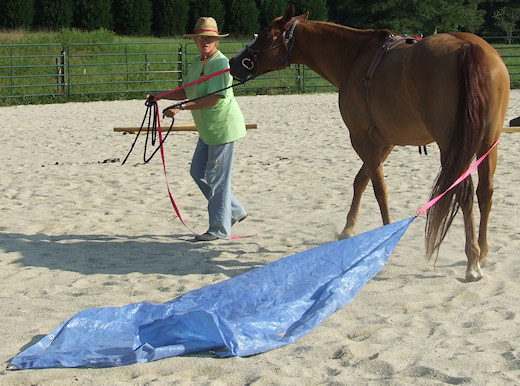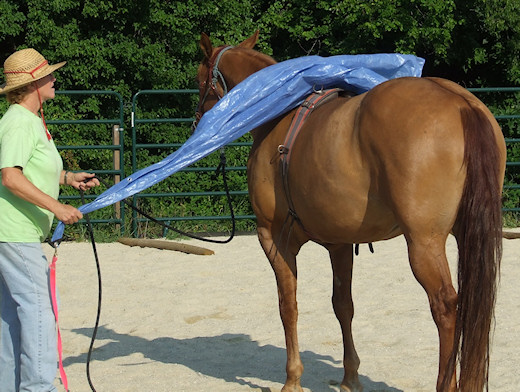Bringing It All Together: Workouts
Part 1. Groundwork With Dixie
A recent arrival here at New Avalon is a sweet red dun quarter horse mare, Dixie, here for a month-long refresher course and tune-up. For the first week we do nothing but ground work together, in preparation for later work under saddle. With Dixie’s help I'll show you how to put together a good groundwork workout.
Each training session lasts for about an hour and includes both sensitizing and desensitizing exercises. Each day we work on the head down cue, lateral flexion, disengaging the hindquarters (turn on the fore), turn on the hind, backing up, longeing with frequent changes of direction, and sending. We also work on desensitizing with the lead rope, the stick and string, a towel, plastic tarp, beach balls, and flags, but not every one of these every day. While longeing or sending I frequently work her over obstacles on the ground. Giving her someplace to go and something to do helps Dixie to use the thinking side of her brain, and that has a very calming effect on any horse. I always weight a session toward the exercises that a horse needs the most work on. Since Dixie longes and backs beautifully, but is quite stiff and has a hard time reaching up under herself to disengage her hind end, we spend much more time flexing and bending than we do longeing and backing. Her stable mate, Doc, on the other hand, flexes and disengages with the lightest touch, but needs more work on his back-up. Every horse is different, and as you go through these exercises each will let you know where they need the most work.
